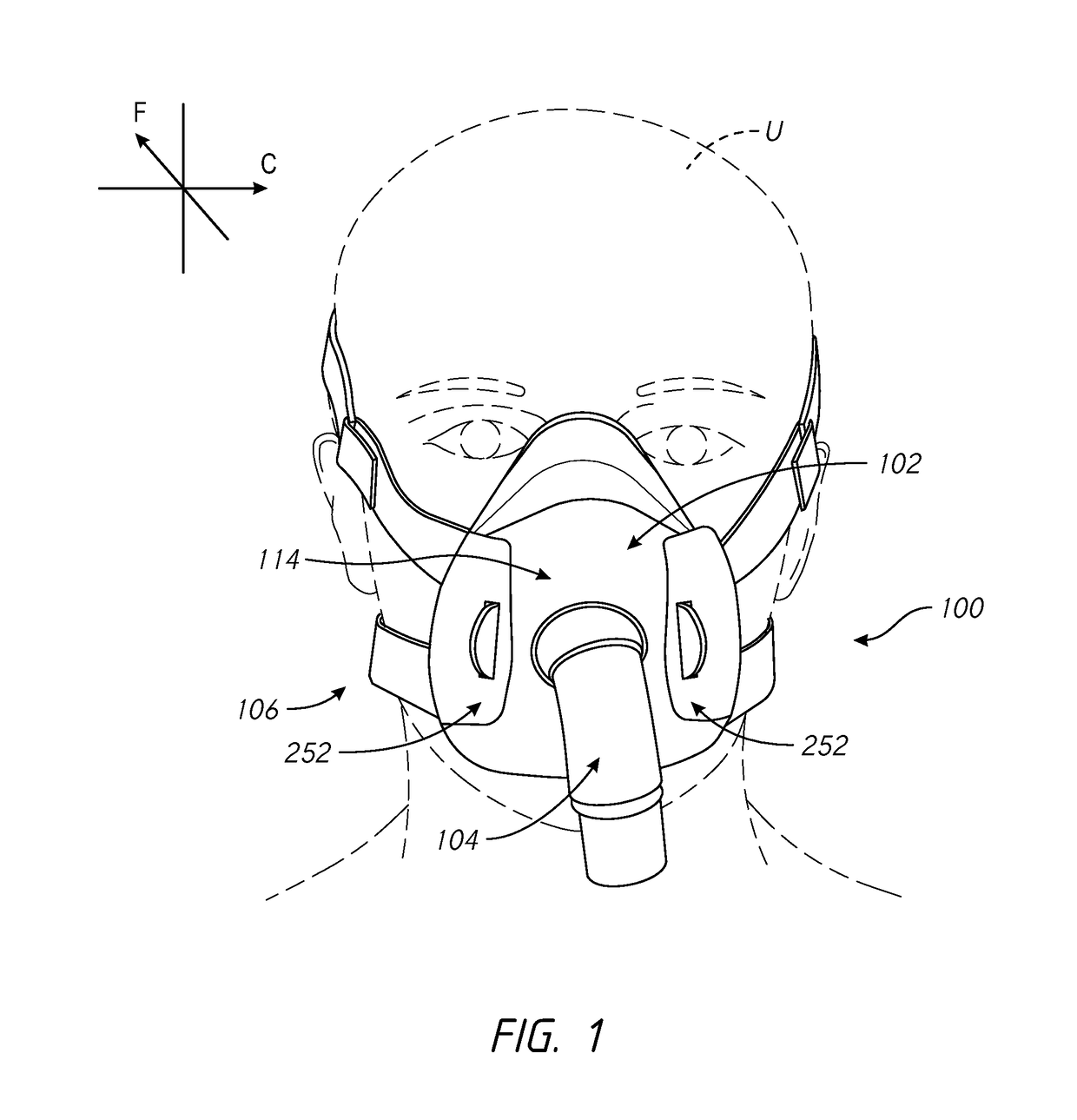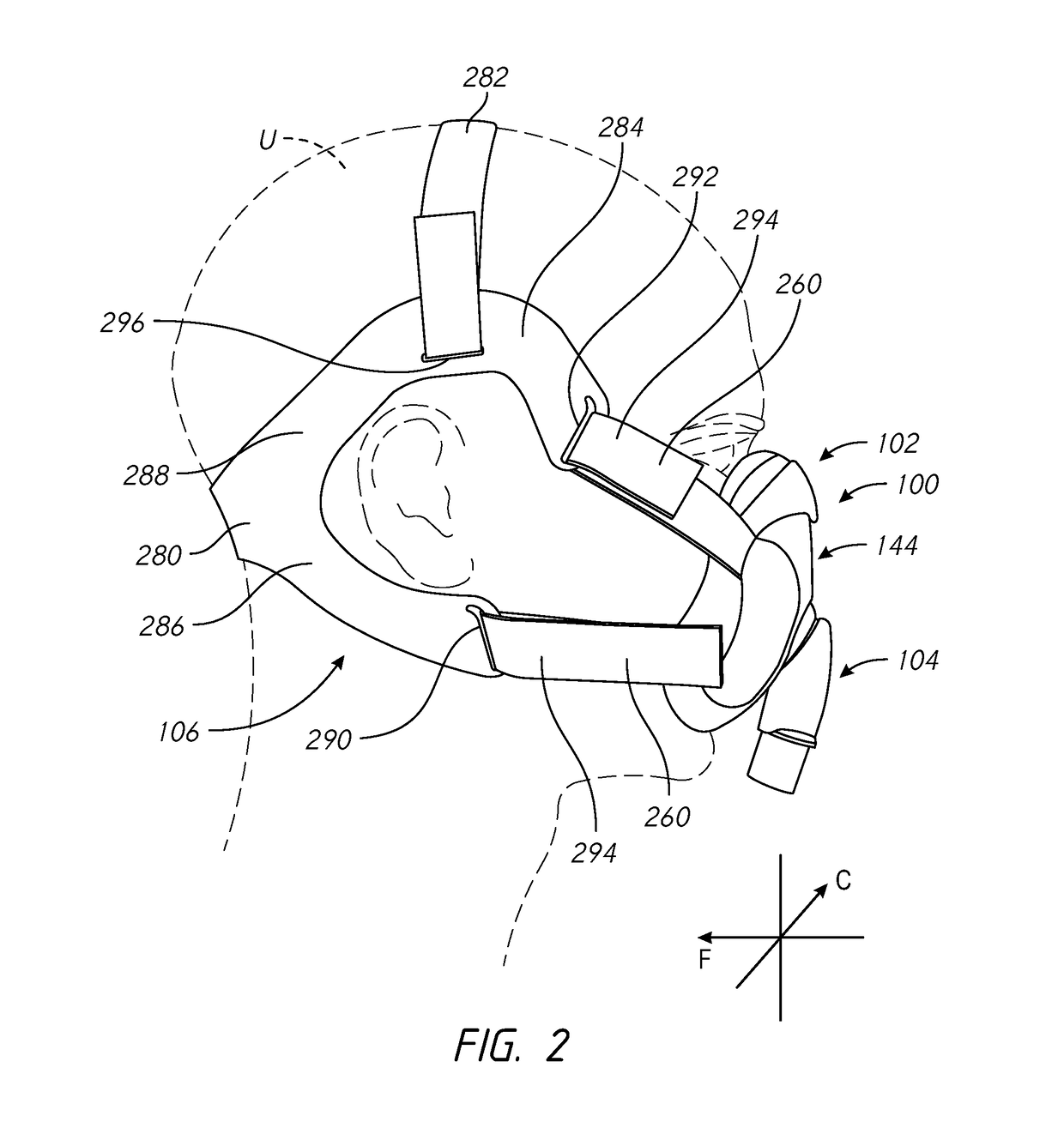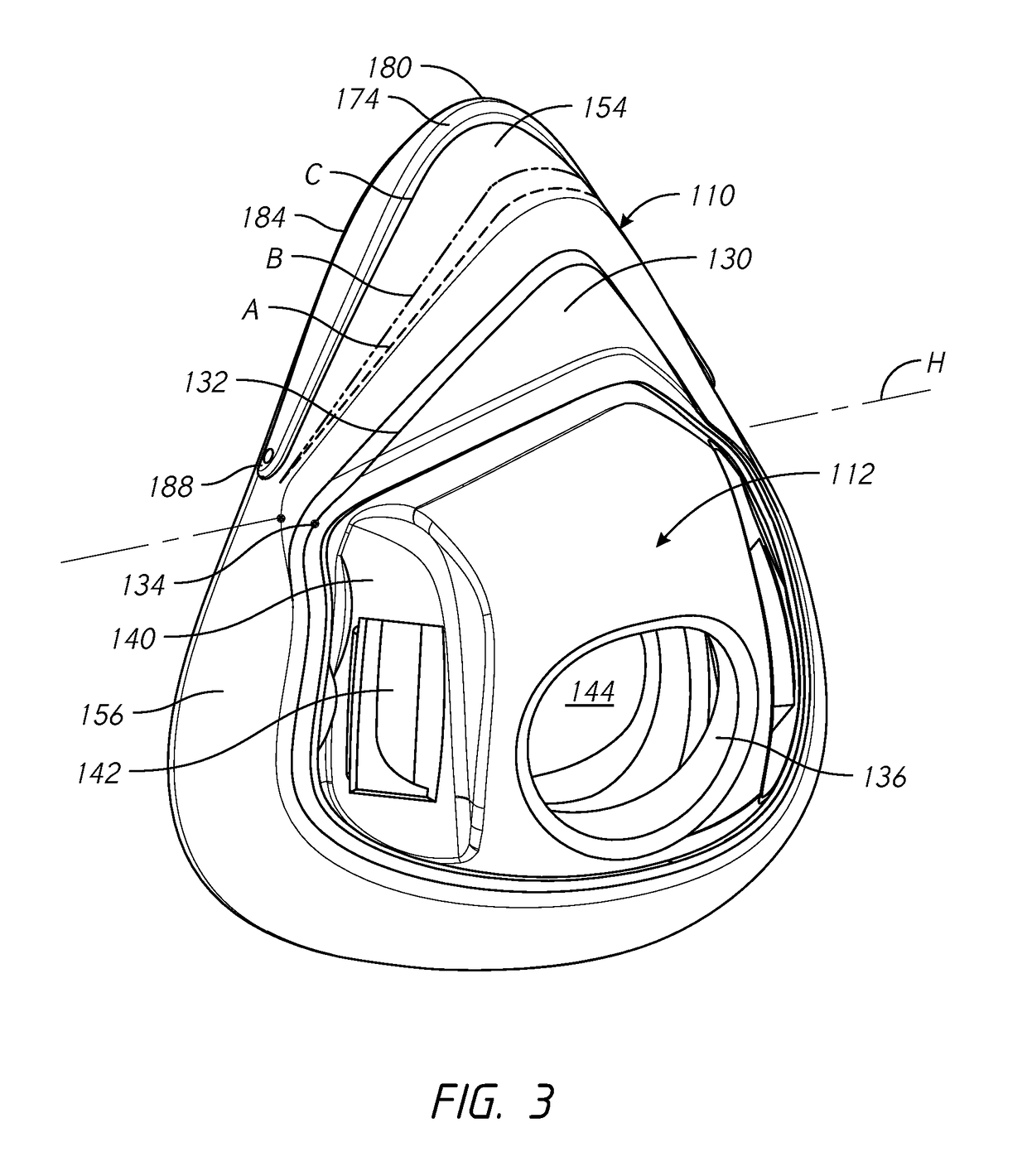An elbow assembly of a patient interface, an Anti-asphyxia valve for an elbow assembly and a connector
a patient interface and elbow assembly technology, applied in the field of elbow assembly of a patient interface, can solve the problems of bias-flow venting system becoming a source of discernable noise, the aa valve in such elbow assembly does not open or close fully or reliably, and the user's nose being elevated, etc., to achieve the effect of reducing noise, improving cleaning ease, and improving the compactness of the respiratory mask
- Summary
- Abstract
- Description
- Claims
- Application Information
AI Technical Summary
Benefits of technology
Problems solved by technology
Method used
Image
Examples
embodiment 19
[0506]k) Support block 954 thickness to hinge 960 thickness: may be between 5:1 and 30:1, more preferably 10:1 to 25:1, more preferably 15:1 to 25:1, and in one preferred 1.
embodiment 3
[0507]1) Valve flap 952 thickness in the region of upper planar surface 972 between the bead to hinge 960 thickness: may be between 1:1 and 10:1, more preferably 1:1 to 8:1, more preferably 2:1 to 5:1, and in one preferred 1.
[0508]m) Valve flap 952 thickness in the region of upper planar surface 972 between the bead to the thickness of the bead region 964a above recess 965: may be between 1:1 and 10:1, more preferably 1:1 to 8:1, more preferably 2:1 to 5:1, and in one preferred embodiment 2.5:1.
[0509]n) Valve flap 952 thickness in the region of upper planar surface 972 between the bead to thickness of the inclined wall 964b: may be between 1:1 and 10:1, more preferably 1:1 to 5:1, more preferably 1:1 to 2:1, and in one preferred embodiment 1.4:1.
[0510]o) Valve flap 952 thickness in the region of upper planar surface 972 between the bead to thickness of the bead region 964a above recess 965: may be between 1:1 and 10:1, more preferably 1:1 to 5:1, more preferably 2:1 to 3:1, and in o...
embodiment 13
[0513]r) Width of bead region 964a to thickness of the bead region 964a above recess 965: may be between 1:1 and 30:1, more preferably 1:1 to 20:1, more preferably 1:1 to 15:1, and in one preferred 1.
Annular Bias-Flow Venting
[0514]For a more detailed understanding of the disclosure, reference is first made to FIG. 32, which shows a breathing circuit according to at least one embodiment, which includes a respiratory mask.
[0515]FIG. 32 is a schematic diagram of a positive pressure respiratory therapy system in the form of a continuous positive airway pressure (CPAP) system 1010 for providing a heated and humidified air stream to a user U through an interface 1110 worn by the user, and which is connected to CPAP system 1010 by a conduit or tube 1012. A humidification chamber 1014 has a heat conductive base in contact with a heater plate 1016 of a humidifier 1017 to humidify the air stream. The conduit 1012 is connected to an outlet 1013 of the humidification chamber 1014 to convey humi...
PUM
 Login to View More
Login to View More Abstract
Description
Claims
Application Information
 Login to View More
Login to View More - R&D
- Intellectual Property
- Life Sciences
- Materials
- Tech Scout
- Unparalleled Data Quality
- Higher Quality Content
- 60% Fewer Hallucinations
Browse by: Latest US Patents, China's latest patents, Technical Efficacy Thesaurus, Application Domain, Technology Topic, Popular Technical Reports.
© 2025 PatSnap. All rights reserved.Legal|Privacy policy|Modern Slavery Act Transparency Statement|Sitemap|About US| Contact US: help@patsnap.com



